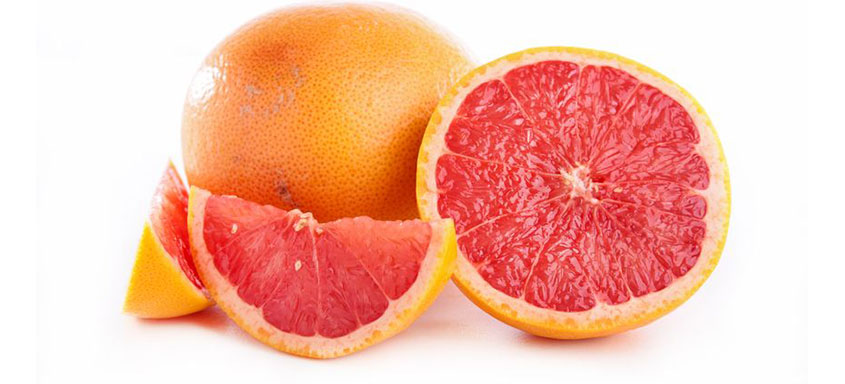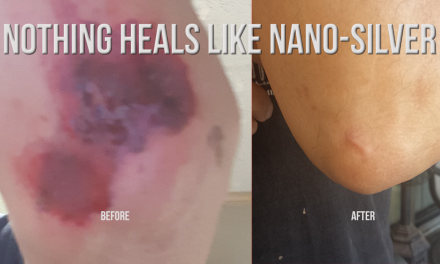Given the increase in pathogens everywhere (bacterial, fungal, parasitic and viral), it is time to consider natural antibiotic alternatives that are without the negative side effects of pharmaceutical compounds. After years of downplaying the dangers of excessive use of antibiotics, the AMA has recently issued some important directives. To avoid the creation of an even greater number of highly resistant super germs, it is now believed that it is imperative for practitioners to be taught to use antibiotics far more sparingly. Given this current admonition, coupled with the fact that antibiotic use, aside from it’s oral ingestion, is plentifully found and ingested via our food chain (poultry, fish, meats, eggs and dairy), a broad spectrum natural substance such as grapefruit seed extract (GSE) can be used widely and effectively.
Determining Antibiotic Efficacy:
Allen Sachs, D.C., C.C.N., author of The Authoritative Guide to Grapefruit Seed Extract, enumerates the following criteria for delineating the ideal antibiotic: “It must have broad spectrum application, be powerful and effective, non-toxic, have minimal impact on beneficial bacteria, be well researched, derived from natural sources, hypo-allergenic, biodegradable, compatible with other natural remedies and affordable.” Considering that grapefruit seed extract meets all these specifications, Dr. Sachs notes it has proven itself safe, effective and non-toxic for topical and internal use with far-reaching internal, industrial and domestic application.
Application of grapefruit seed extract:
The diverse germicidal use of grapefruit seed extract would fill a recipe book. Indeed one finds GSE a diverse and indispensable function in the kitchen, suitable domestically and commercially as a sanitizer (for dishes and utensils), produce wash, adjunct ingredient to dish soaps and natural disinfecting solutions for counter tops, floors, sinks and refrigerators. Butcher blocks, a seedbed for harboring food-borne pathogens (salmonella bacteria), are easily sanitized by washing and then applying a 10-20 drop solution of GSE (diluted with water). Work it into the board with a damp sponge, leave it on for at least five minutes or just leave it to dry without rinsing.
Its benign aroma is an added feature, particularly for those with chemical sensitivities who find grapefruit seed extract a viable and pleasant alternative to the noxious fumes and reactions (skin, olfactory, lung) of commercial chemicals such as chlorinated compounds.
Bathroom Bugs and Toiletries:
Invisible predators lurk in nooks and crannies, particularly in restrooms. As an all-purpose disinfectant, 30-60 drops of grapefruit seed extract per 32 ounce spray bottle can be used alone or in combination with natural all-purpose cleaners to sanitize commodes, sinks, shower stalls, bathtubs and wastebaskets. The customary fumes emitted from grout cleaners, ammoniated compounds (glass and floor cleaners), and the multiple toxic chemical compounds used to clean bathrooms make this non-toxic approach favorable for anyone (in the workplace, at home, those with young children, around the aged, those with compromised lung problems or chemical sensitivities) who wants to preserve his/her health. Additionally, GSE ‘s economical virtues (reasonable price) enable one to reduce a cabinet full of chemicals in favor of a basic soap and natural disinfecting agent. Using powerful chemicals (like drugs) to control a situation is not necessarily the optimal way when a less toxic, non-invasive approach can be accessed without paying health consequences.
As a toiletry mainstay, GSE offers extensive and practical daily application (domestically and for travel). In liquid form GSE drops can be used in water piks as a germ-killing additive to destroy bacteria that cause plaque and gingivitis. Three drops added to five or six ounces of water is a basic oral rinse recipe. Put a drop of grapefruit seed extract on your toothbrush along with your regular natural toothpaste for added germ-killing effect.
Given the variety of grapefruit seed extract products currently available in the health market, a basic GSE toiletry arsenal includes gum cleanser (for disinfecting and relieving sore gums), ear drops, nail drops (for hand and toenail fungus) and foot powder (a superb alternative to commercial talcum powder). Applying grapefruit seed extract nail drops and using GSE in liquid soap (instead of an antimicrobial soap which destroys both friendly and unfriendly bacteria) is one healthy approach to maintaining hand/nail hygiene. GSE antifungal foot powder, aside from its application for athlete’s foot, can be used as a deodorizing powder and overall body powder even for infants (to alleviate diaper rash). As a facial cleanser two to three drops of grapefruit seed extract with water or mixed with your favorite natural facial cleanser provides added antiseptic benefits. GSE herbal spray such as Imhotep’s Ouch and Itch spray has versatile antiseptic utility as a deodorant or as a relief aid for poison oak/ivy, bug bites, sunburn, razor burn and scratches. GSE herbal throat relief spray (a mixture of herbs and GSE) can be carried in your purse or travel bag to soothe those unexpected throat tickles that occur at the most inconvenient times. GSE feminine douche is a viable alternative to the chemically laden, perfumed commercial versions.
A quick caveat about deodorants; grapefruit seed extract is not an antiperspirant. Rather it kills the bacteria, the source of odor. It does not impede sweating. From a health perspective it is unhealthy to block lymph channels from perspiring toxins which the body is eliminating. The skin, the body’s largest organ for elimination, must be encouraged to breathe and excrete poisons. Minimizing offensive odors is the goal here, not sacrificing one’s health for social etiquette. The commercial marketing caption “never let them see you sweat” convinces the public to sacrifice health for ego’s sake. Would you control incontinence by plugging the urethra to avoid embarrassment? Would you sew the rectum closed to avoid eliminating at an inconvenient time? Often confined in foxholes for days, even our special armed forces catheterize themselves during intervals to facilitate elimination-graphically gruesome comparisons but they are on target. Blocking sweat glands is reckless and dangerous.
If you travel routinely, consider including GSE drops or caps in your travel bag. Treat any drinking water with a few drops and use judiciously as a preventative measure against unwanted parasitic visitors that take refuge in your food entrees and beverages. This practice should ward off Montezuma’s revenge or traveler’s diarrhea. A pocket-size spray bottle filled with pure water, a few GSE drops, some lavender oil and tea tree oil (test for sensitivity) makes a quick and easy natural antiseptic hand cleaner when lavatory facilities aren’t readily accessible.
Candida Companions:
A discourse on grapefruit seed extract would be incomplete without addressing its pivotal role in controlling Candida proliferation. As an opportunistic fungus, Candida albicans is quickly becoming a household word. Normally inhabiting the gastrointestinal tract, mouth and throat, its overgrowth is responsible for debilitating symptoms ranging from oral thrush to leaky gut syndrome with simultaneous compounding emotional symptoms including depression and mood swings. Leo Galland, M.D. notes a twofold benefit (tolerance and effectiveness) using GSE instead of conventional antifungals (nystatin, amphotericin).
Canadian naturopath, Dr. David Bayley, finds GSE simpler to regulate (dosages) than other anti-yeast compounds, without the unpleasant after taste-an asset for any age group. He notes both its efficacy and economic virtues make it a desirable product. Although grapefruit seed extract leaves no aftertaste, it is still “the taste you love to hate,” according to Dr. William Kellas. To camouflage the acrid flavor, GSE can be mixed with juice. Undiluted, its bitter taste may leave you puckering for hours.
Jay Gordon, M.D., recommends a dilution ratio of five drops per four ounces of water as a baby bottom “wash” with each diaper change. Dr. Gordon uses a similar dilution for treating refractory diaper rashes and oral thrush in children.
Institutional application for grapefruit seed extract
Bathing facilities:
As an alternative to conventional toxic chemicals, GSE is an effective and safe alternative for use in humidifiers (a source of algae and molds that increases susceptibility to upper respiratory infections) and as a germicide and chlorine alternative in the laundry (chlorine bleach destroys most organisms). In South American swimming and bathing facilities (including hot tubs and Jacuzzi) GSE extract commonly replaces bactericides, algaecides and fungicides. Noxious chlorinated bubbles and skin irritation are bypassed when substituted with GSE. When water clarity is not a priority, GSE can substitute for the aforementioned chemicals by itself, otherwise a combination of the two (grapefruit seed extract and chlorine) can be used simultaneously, since clouded water turbidity lacks eye appeal.
Laundry sanitation:
As a sanitizing agent in hospitals, grapefruit seed extract is a premiere additive for hospital laundry, resulting in linens that are bacteria and fungi free. Laundry operations manager at The Florida Hospital, Jerry Skidmore, C.L.M., finds peace of mind knowing that after a 30-year residency in the laundry industry, he has full confidence in GSE’s antibacterial/antifungal properties to maintain sanitary linens. Confidence in GSE’s germicidal capabilities is expanding its horizons to include application in hospital carpet shampooing machines. Ten to 15 drops of GSE per gallon reservoir is sufficient to destroy commonly known hospital pathogens (staph, strep, salmonella and aspergillus).
Medical facilities:
It is timely for medical facilities to take advantage of this non-toxic antimicrobial in critical health care areas since nosocomial infections are increasingly prevalent. Operating rooms are using GSE at higher dilutions for disinfecting/sterilizing purposes. Clinics incorporate GSE in their inhalators as part of their protocol for modulating respiratory infections. No telling how rapid the list of applications will multiply over time for this innocuous, safe, environmentally-friendly germicide. Staff, patients and visitors all reap GSE’s benefits by avoiding toxic chemicals in favor of a safe antimicrobial with both expansive and inexpensive application for use internally and externally. Additionally, GSE’s efficacy is punctuated by showing no demonstrable resistance, in contrast to pharmaceutical antibiotics.
Future prospects for grapefruit seed extract:
The sisterhood of economics and politics mitigates expanding in vitro testing of GSE to include in vivo studies, particularly for viral testing. Whereas antiprotozoan (fungal and bacterial) testing has proven effective for GSE, quality testing for viral application is tedious, aside from its economical hindrances. On a positive note “Grapefruit Seed Extract Report” cites several viral related studies that could catapult GSE research into future limelight. Microbiology/virology and GSE researcher William Shannon, Ph.D., cites promising grapefruit seed extract effectiveness in deactivating herpes simplex virus l and influenza type A2 virus. A South American lab satisfactorily tested GSE against measles virus and the USDA determined that four animal viruses (avian influenza, swine vesicular disease, foot and mouth disease and African swine fever) succumbed to GSE’s activity.
Despite the current absence of a large labor pool and matching monetary resources to fund GSE research, there is hope that GSE’s innocuous yet potent antimicrobial and germicidal potential will elicit scientific interest. Public interest and consumer demand will drive the market to respond to our needs. Grapefruit seed extract researcher and associate professor Dr. Roger Wyatt points to grapefruit seed extract’s promising future as a subject to be researched for a fundamental reason: “The lack of toxicological properties of grapefruit seed extract is also impressive when one views the efficacy data . . . extremely small concentrations of the product can be used with marked beneficial results.” Given the impressive status and safety report, GSE’s versatility could readily become a household and commercial standard ingredient. Its inherent selling features appeal to a wide audience-it is safe, non-toxic, environmentally friendly, and it has broad spectrum anti- microbial and germicidal properties. Economics may be limiting it’s research, but not it’s availability nor it’s utility in an era when the urgency for safe, efficacious germ inhibitors are at an all-time high.
Grapefruit seed extract should be handled cautiously at full strength. Avoid contact with eyes and skin. Avoid breathing vapors. Wash skin with water should GSE come in contact with skin directly. Bio/chem labs (manufacturers of Citricidal) notes this natural extractive is listed as GRAS (generally recognized as safe) and has been tested in both human and animals. It is recognized as non-toxic and at dilutions up to two percent considered non-irritating. It is also non-corrosive. Always test a product for allergenicity and sensitivity.
Applications and Dilutions for Grapefruit Seed Extract
- Water pik: 3-4 drops GSE per reservoir.
- Oral rinse: 3 drops per 5 ounces of water.
- Toothbrush: l drop with or without toothpaste.
- Facial cleanser: 2-3 drops applied to fingertips and massaged onto a pre-moistened face.
- Skin disorders: 5-10 drops GSE mixed with l tablespoon of water applied to affected areas (athlete’s foot, insect bites, skin irritations).
- Nasal rinse: l drop per 1-2 ounces of water. Spray into nostrils with head upright, using eye dropper or nasal sprayer.
- Dish/utensil sanitizer: 15-30 drops added to a sink of dishwashing water or to dishwasher.
- Laundry sanitizer: 10 drops per small load, 15 drops per large load. (Best results obtained when used in final rinse.)
- Traveler’s diarrhea: 3-4 drops per 5 ounces of water taken daily as a preventative.
- Toothbrush sanitizer: 5-10 drops per glass of water. (Soak tooth brush a minimum of 10 minutes.)
- Sore throat: 3 drops GSE stirred into 5 ounces of water.(Use as a gargle.)
- Douche: 1-3 drops per 6-8 ounces of water. Douche once a day for one week.
- Scalp disorders (dandruff, etc.): 5-10 drops along with regular shampoo. (Massage into scalp. Leave it to set a few minutes. Rinse as usual.)
- Produce/meat/poultry wash: 30 drops per sink full of cold water. (Or spray wash [10 drops GSE per 32-ounce spray bottle] vegetables, fruits, poultry and meats to extend shelf life.)
- Cutting board sanitizer: 10-20 drops GSE applied to board after washing using, a wet sponge. (Let it sit five minutes. Rinse or leave it on without rinsing. Effective against a wide variety of microorganisms including salmonella.)
- All purpose disinfectant: 30-60 drops GSE per 32-ounce spray bottle mixed with water. (Use on sinks, commodes, countertops, fixtures, floors, in wastebaskets or any location that harbors or breeds germs.)











